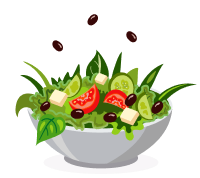Table Of Contents
Breastfeeding and Weight Loss: What You Need to Know
Losing weight while breastfeeding is a natural concern for many new mothers. The good news? Breastfeeding naturally burns up to 500 calories daily, giving you a head start on your weight loss journey. Understanding how your body works during this special time helps create realistic expectations and healthier approaches to postpartum weight loss.
Your body undergoes significant changes after childbirth, and breastfeeding adds another layer to this transformation. While some mothers shed pregnancy weight quickly, others find it takes several months. This variation is completely normal and depends on factors like pre-pregnancy weight, diet quality, activity level, and individual metabolism.
The key to successful weight loss while nursing lies in creating a balanced approach that supports both your health and your baby’s nutritional needs through your breast milk. Crash diets or severe calorie restriction can compromise milk production and quality, leaving both you and your baby lacking essential nutrients.
Creating a Breastfeeding Diet Plan That Supports Weight Loss
A successful breastfeeding diet plan to lose weight balances nutrition for milk production with gradual weight loss. The ideal approach focuses on nutrient-dense whole foods rather than simply cutting calories. This strategy ensures your body gets everything it needs while naturally reducing excess weight.
To create an effective diet plan while breastfeeding to lose weight, focus on these key principles:
- Eat regular meals and healthy snacks throughout the day
- Choose whole foods over processed options
- Include protein with each meal for sustained energy
- Incorporate plenty of fruits and vegetables for nutrients and fiber
- Stay well-hydrated with water as your primary beverage
The quality of your diet matters more than quantity. Focus on filling your plate with nutrient-rich foods rather than counting every calorie. This approach naturally helps control portions while ensuring you get essential vitamins and minerals needed for milk production and overall health.
Key Nutrients Needed for Healthy Breastfeeding and Weight Loss
Your nutritional needs increase significantly during breastfeeding. According to the National Institutes of Health, breastfeeding mothers need additional nutrients to support milk production while maintaining their own health. These essential nutrients include:
- Protein: Vital for tissue repair and milk production (lean meats, fish, eggs, legumes, dairy)
- Calcium: Critical for bone health for both you and baby (dairy products, fortified plant milks, leafy greens)
- Iron: Supports energy levels and prevents anemia (lean red meat, beans, spinach, fortified cereals)
- Omega-3 fatty acids: Support baby’s brain development (fatty fish, walnuts, flaxseeds)
- Folate: Essential for cell division and growth (leafy greens, citrus fruits, beans)
- Vitamin D: Important for calcium absorption and bone health (fortified dairy, egg yolks, sunlight exposure)
A breastfeeding diet plan that incorporates these nutrients supports optimal milk production while gradually reducing body fat. The American Academy of Pediatrics recommends focusing on these nutrients rather than restricting calories too severely while nursing.
How Many Calories Do You Need While Breastfeeding?
Understanding your caloric needs is essential for creating an effective diet plan while breastfeeding to lose weight. Most healthcare providers recommend consuming about 1,800-2,200 calories daily while breastfeeding – approximately 300-500 calories more than pre-pregnancy levels.
This additional calorie allowance accounts for the energy your body uses to produce milk. Dropping below 1,500-1,800 calories per day can potentially decrease milk supply and leave you feeling exhausted. Remember that breastfeeding itself burns calories, which naturally aids weight loss when combined with a nutritious diet.
Rather than strict calorie counting, focus on eating when hungry and stopping when full. Your body has natural hunger cues that signal when you need more nutrients for milk production. A moderate calorie deficit of around 300-400 calories per day can lead to safe, gradual weight loss of about 1-2 pounds per week without compromising milk supply.

The Best Breastfeeding Diet Plan to Lose Weight
Creating an effective breastfeeding diet plan requires balancing nutritional needs with weight loss goals. The best approach combines nutrient-dense foods with reasonable portion sizes. Here’s what a day might look like on an optimal breastfeeding diet plan to lose weight:
Breakfast: Start your day with protein and complex carbohydrates. Try oatmeal topped with berries, flaxseed, and a tablespoon of almond butter. Oats are known to support milk production while providing sustained energy.
Mid-morning snack: A piece of fruit with a small handful of nuts provides healthy fats and fiber to keep you satisfied between meals.
Lunch: Aim for a balanced meal with protein, healthy fats, and vegetables. A salad with leafy greens, grilled chicken, avocado, and a light vinaigrette dressing offers essential nutrients while supporting weight loss.
Afternoon snack: Greek yogurt with a sprinkle of granola provides calcium and protein to sustain energy levels during the afternoon slump.
Dinner: Include lean protein, complex carbohydrates, and vegetables. Baked salmon with quinoa and steamed broccoli delivers omega-3 fatty acids and multiple vitamins needed for both you and your baby.
Evening snack (if needed): A small serving of fruit or a few whole-grain crackers with hummus can satisfy late-night hunger without excess calories.
This flexible meal structure provides approximately 1,800-2,200 calories depending on portion sizes, supporting both milk production and weight loss. Adjust quantities based on your hunger levels, activity, and how your body responds.
9 Nutrient-Dense Snacks for Breastfeeding Mothers
Smart snacking plays a crucial role in any breastfeeding diet plan to lose weight. These nutrient-dense options provide energy boosts throughout the day while supporting milk production and overall health:
- Apple slices with peanut butter: Combines fiber with protein and healthy fats for sustained energy
- Greek yogurt with berries: High in protein and calcium with antioxidants from the fruit
- Hummus with vegetable sticks: Provides protein, fiber, and essential vitamins
- Hard-boiled eggs: Compact protein source with choline for brain development
- Smoothie with spinach, banana, and milk: Delivers calcium, potassium, and iron in an easy-to-consume form
- Trail mix with nuts and dried fruits: Offers healthy fats, protein, and natural sweetness
- Oatmeal energy bites: Combine oats, nuts, and honey for lactation support and energy
- Avocado toast on whole-grain bread: Healthy fats with complex carbohydrates for lasting energy
- Dark chocolate (70%+ cacao) with almonds: Provides antioxidants, magnesium, and a satisfying treat
Keep these snacks readily available for when hunger strikes. Pre-portioned options prevent overeating while ensuring you have nutritious choices on hand, even during hectic moments with your baby. These snacks fit perfectly into a diet plan while breastfeeding to lose weight.
Hydration: How Much Water to Drink When Breastfeeding
Proper hydration forms a crucial component of any breastfeeding diet plan. Your body requires additional fluids to produce milk – approximately 700-800mL of fluid is used daily just for milk production. Dehydration can potentially impact milk supply and leave you feeling fatigued.
Most lactation experts recommend drinking about 12-16 cups (96-128 ounces) of fluid daily while breastfeeding. This sounds like a lot, but includes water in foods and other beverages. A practical approach is to drink a glass of water during each breastfeeding session, plus additional fluids throughout the day.
The American Academy of Pediatrics suggests using your thirst as a guide and checking your urine color – pale yellow indicates good hydration. While water should be your primary hydration source, other options include:
- Herbal teas (especially those supporting lactation like fenugreek, blessed thistle, or fennel)
- Milk (provides additional calcium and protein)
- Diluted fruit juices (for extra vitamins, but be mindful of sugar content)
- Soups and broths (provide both hydration and nutrients)
Adequate hydration not only supports milk production but also helps control hunger, as thirst is often mistaken for hunger. Staying well-hydrated can help prevent unnecessary snacking, supporting your weight loss goals while maintaining optimal milk supply.

Foods to Avoid While Breastfeeding and Losing Weight
While creating your breastfeeding diet plan to lose weight, certain foods are better limited or avoided. These fall into two categories: foods that may affect your baby and foods that hinder weight loss efforts. Here’s what to consider:
Foods that may affect your baby:
- Alcohol: Passes directly into breast milk and can disrupt infant sleep patterns and development
- Caffeine: Moderate amounts (1-2 cups daily) are generally considered safe, but excessive caffeine can make babies irritable
- Highly spicy foods: May alter milk flavor and cause discomfort in sensitive babies
- Common allergens: If your baby shows sensitivity, you might need to limit dairy, eggs, nuts, or wheat temporarily
Foods that hinder weight loss:
- Processed foods: Often high in calories, sodium, and unhealthy fats while low in nutrients
- Added sugars: Found in desserts, sweetened beverages, and many packaged foods
- Refined carbohydrates: White bread, pastries, and other processed grains that cause blood sugar spikes
- Fried foods: High in calories and unhealthy fats that contribute to weight retention
- Excessive sodium: Can increase water retention and blood pressure
Remember that most babies aren’t affected by maternal diet, so don’t restrict foods unnecessarily. If you notice your baby becomes fussy, keep a food journal to identify potential triggers. Focus on moderating problematic foods rather than complete elimination to maintain dietary balance.
How to Create a Customized Meal Plan for Weight Loss While Breastfeeding
Creating a personalized breastfeeding diet plan ensures you meet both your nutritional needs and weight loss goals. Follow these steps to design a plan that works specifically for your body and lifestyle:
- Calculate your calorie needs: Start with a base of 1,800-2,200 calories, adjusting based on your pre-pregnancy weight, activity level, and how exclusively you’re breastfeeding.
- Focus on macronutrient balance: Aim for approximately 25-30% protein, 40-45% complex carbohydrates, and 25-30% healthy fats in your daily diet.
- Plan regular meals and snacks: Schedule 3 main meals with 2-3 snacks to maintain steady energy levels and prevent excessive hunger.
- Include galactagogues: Incorporate foods known to support milk production such as oats, fenugreek, brewer’s yeast, and leafy greens.
- Prepare in advance: Batch cook meals and pre-portion snacks during available time to ensure healthy options are readily available.
Consider tracking your food intake for a few days to identify patterns and areas for improvement. Many apps now include specific settings for breastfeeding mothers that account for increased nutritional needs while supporting gradual weight loss.
Listen to your body’s signals and adjust your diet plan while breastfeeding to lose weight as needed. Some days you may need more calories, especially during growth spurts when your baby nurses more frequently. Flexibility is key to maintaining both your milk supply and your well-being.
Safe Exercise Options While Breastfeeding to Lose Belly Fat
Combining your breastfeeding diet plan with appropriate exercise accelerates weight loss, especially around the midsection. After receiving medical clearance (usually 6-8 weeks postpartum), consider these safe exercise options that complement breastfeeding:
- Walking: Start with 10-15 minute walks and gradually increase duration. Pushing a stroller adds resistance for increased calorie burn.
- Postpartum yoga: Strengthens core muscles and improves flexibility while reducing stress, which can impact milk production.
- Swimming: Provides full-body, low-impact exercise that’s gentle on joints while effectively burning calories.
- Pelvic floor exercises: Essential for recovering from childbirth and creating foundation for more intensive exercise later.
- Modified strength training: Light weights help rebuild muscle mass, which increases metabolic rate and aids fat loss.
Start with just 10-15 minutes of activity and gradually increase as your body adjusts. Aim for 150 minutes weekly of moderate-intensity exercise, as recommended by the American College of Obstetricians and Gynecologists for postpartum women.
Exercise timing matters when breastfeeding. Consider working out right after nursing when your breasts are empty and more comfortable. Wear a supportive sports bra to reduce discomfort, and stay hydrated by drinking water before, during, and after exercise to maintain milk supply.
Common Challenges and Solutions When Losing Weight While Breastfeeding
Even with the best breastfeeding diet plan to lose weight, you may encounter obstacles. Here are common challenges and practical solutions:
Challenge: Increased hunger and cravings
Solution: Rather than ignoring hunger signals, choose nutrient-dense foods that satisfy while supporting milk production. Keep healthy snacks readily available for when hunger strikes. Protein-rich options like Greek yogurt, eggs, or nut butter on whole-grain crackers provide satiety without excess calories.
Challenge: Limited time for meal preparation
Solution: Batch cook when possible and use simple meal formulas (protein + vegetable + healthy carb) for quick assembly. Stock up on nutritious convenience foods like pre-cut vegetables, rotisserie chicken, canned beans, and frozen fruits and vegetables to expedite meal preparation.
Challenge: Stubborn belly fat
Solution: Be patient with your body’s recovery process. Focus on overall health rather than spot reduction. Core-strengthening exercises like modified planks and gentle abdominal compressions can help restore muscle tone once you’ve received medical clearance.
Challenge: Stress and sleep deprivation
Solution: Lack of sleep increases hunger hormones and can derail weight loss efforts. Prioritize rest when possible, napping when your baby sleeps. Practice stress-reduction techniques like deep breathing, gentle stretching, or meditation. Even 5-minute sessions can help manage cortisol levels that contribute to belly fat storage.
Challenge: Plateau in weight loss
Solution: Weight loss naturally slows and fluctuates. Reassess your diet plan while breastfeeding to lose weight, possibly increasing protein intake or adjusting meal timing. Sometimes, adding variety to your exercise routine or slightly increasing intensity (with medical approval) can help overcome plateaus.
Remember that postpartum weight loss typically occurs gradually. Aim for losing 1-2 pounds weekly, which supports sustained progress without compromising milk supply. The patience and care you show your body during this transition mirrors the nurturing you provide your baby.
Conclusion: How to Lose Belly Fat While Breastfeeding – Create a Customized Plan for Yourself!
Postpartum meal planning is an integral part of a new mother’s diet—the best way to lose belly fat while breastfeeding is to create a customized plan for yourself.
While it’s important to eat healthily and exercise, it’s also important to consider your baby’s needs. Breastfeeding mothers are advised to eat foods that are easily digested and offer nutrients that will be beneficial for their milk supply.
The postpartum period can be difficult for many mothers. It can be overwhelming, stressful, and tiring at times. This is why creating personalized postpartum meal planning for yourself will help you feel more confident and in control during this time.
With the help of this postpartum meal planning guide, you can create a customized plan for yourself and your family that’s perfect for your lifestyle and eating habits!
William is from Canada, he is passionate nutrition & wellness writer. William understands that the topic of wellness is still not well understood, so his goal is to enlighten and teach people how to live healthier and happier in their bodies.










This article discusses several great meal plan for breastfeeding mothers to lose weight. However, it is difficult for me to drink a lot of water, is it really a very important point?
Hi, Jessica!
Yes, staying hydrated is crucial, especially for breastfeeding mothers. If drinking a lot of water is challenging, try incorporating hydrating foods like fruits and veggies into your meals. Small steps can make a big difference! 😊